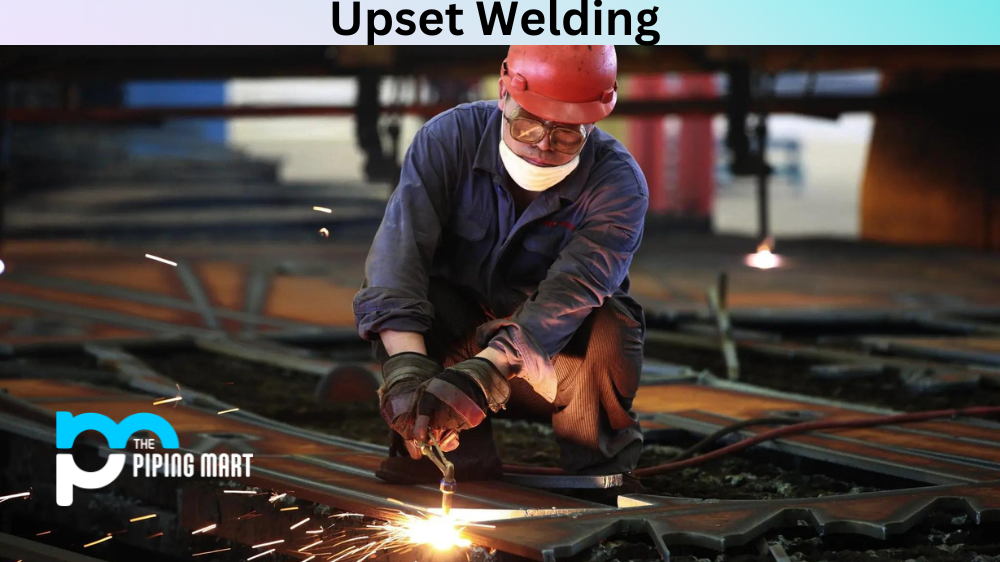Upset welding is a type of welding process that is used to join two pieces of metal together. It has many advantages, making it a popular choice for welders, but like all processes, it also has some drawbacks that need to be considered before using it. To help you decide whether upset welding is suitable for your project, let’s take a look at the pros and cons.
Advantages of Upset Welding
Upset welding offers several advantages over other types of welding processes. For one thing, it requires less heat input than different types of welding, meaning that the welds can be completed more quickly. This makes it ideal for projects where time is an essential factor. Additionally, upset welding requires minimal preparation work and can be done in tight spaces as there is no requirement for backup material or preheating. Lastly, upset welding produces strong welds with good penetration and minimal distortion on the joined parts.
Increased Productivity
Upset welding is a welding process that can increase productivity by allowing for the welding of multiple parts simultaneously. This can be beneficial for companies that produce large quantities of products, as it can help to speed up the production process.
Improved Quality
Upset welding can also improve the quality of welds by providing a stronger and more consistent weld. This is due to the fact that upset welding creates a smaller and more controlled weld bead, which helps to prevent defects.
Reduced Costs
Another advantage of upset welding is that it can help to reduce costs associated with the welding process. This is because upset welding requires less power than other welding processes, such as arc welding. Additionally, upset welding can help to reduce material costs by eliminating the need for filler materials.
Increased Safety
Upset welding can also help to increase safety by reducing the heat and sparks produced during the welding process. This can help to prevent injuries and fires in the workplace.
Environmentally Friendly
Upset welding is also environmentally friendly as it does not produce harmful emissions. This is because upset welding uses an electric current to create the weld rather than using a flame
Disadvantages of Upset Welding
Though there are many advantages to using upset welding, some potential downsides must be considered when deciding whether this process is suitable for your project. One such downside is that because less heat input is used during the process, there may be problems with surface porosity or cracking in the weld area if not done properly. Additionally, since this type of weld relies on pressure rather than heat to achieve a bond between two pieces of metal, it may not work as well on thicker materials or materials which are difficult to deform under pressure. Finally, there may be some difficulty controlling the amount of penetration in the weld area when using this process due to its reliance on force instead of heat.
Limited to Smaller Pieces
Upset welding is limited to smaller pieces because the process relies on gravity to weld the two pieces together. This means that only smaller pieces can be used, as larger amounts would be too heavy and would not be able to fuse.
Requires More Time
Upset welding also requires more time than other welding processes, as the welders must carefully position the two pieces for the process to work correctly. This can often be a time-consuming process, which can lead to increased costs.
Can Be Difficult to Control
Another disadvantage of upset welding is that it can be challenging to control. This is because the process relies on gravity to weld the two pieces together, which means that any movement of the pieces can cause problems. This can often lead to inconsistent welds, which can impact the quality of the finished product.
Not Suitable for All Materials
Upset welding is also not suitable for all materials. This is because the process works best with soft and malleable materials. More complex materials, such as metals, can often be difficult to weld using this method.
Requires Specialized Equipment
Lastly, upset welding requires specialized equipment that is only sometimes readily available. This can often lead to increased costs and delays in the welding process.
Conclusion:
When considering upsetting welding for your project, it’s important to weigh its advantages and disadvantages before deciding. The pros include:
- Minimal preparation time is needed.
- Faster completion times.
- Better penetration.
- Good strength in the final product with minimal distortion on the parts being joined together.
However, some potential drawbacks exist, such as surface porosity or cracking issues, difficulties penetrating thicker materials, and difficulty controlling penetration when relying solely on pressure rather than heat input during the process. Ultimately though, with proper care and attention given to each step in the process, upset welding can make an excellent choice for any project requiring solid bonds between two pieces of metal.

A passionate metal industry expert and blogger. With over 5 years of experience in the field, Palak brings a wealth of knowledge and insight to her writing. Whether discussing the latest trends in the metal industry or sharing tips, she is dedicated to helping others succeed in the metal industry.



